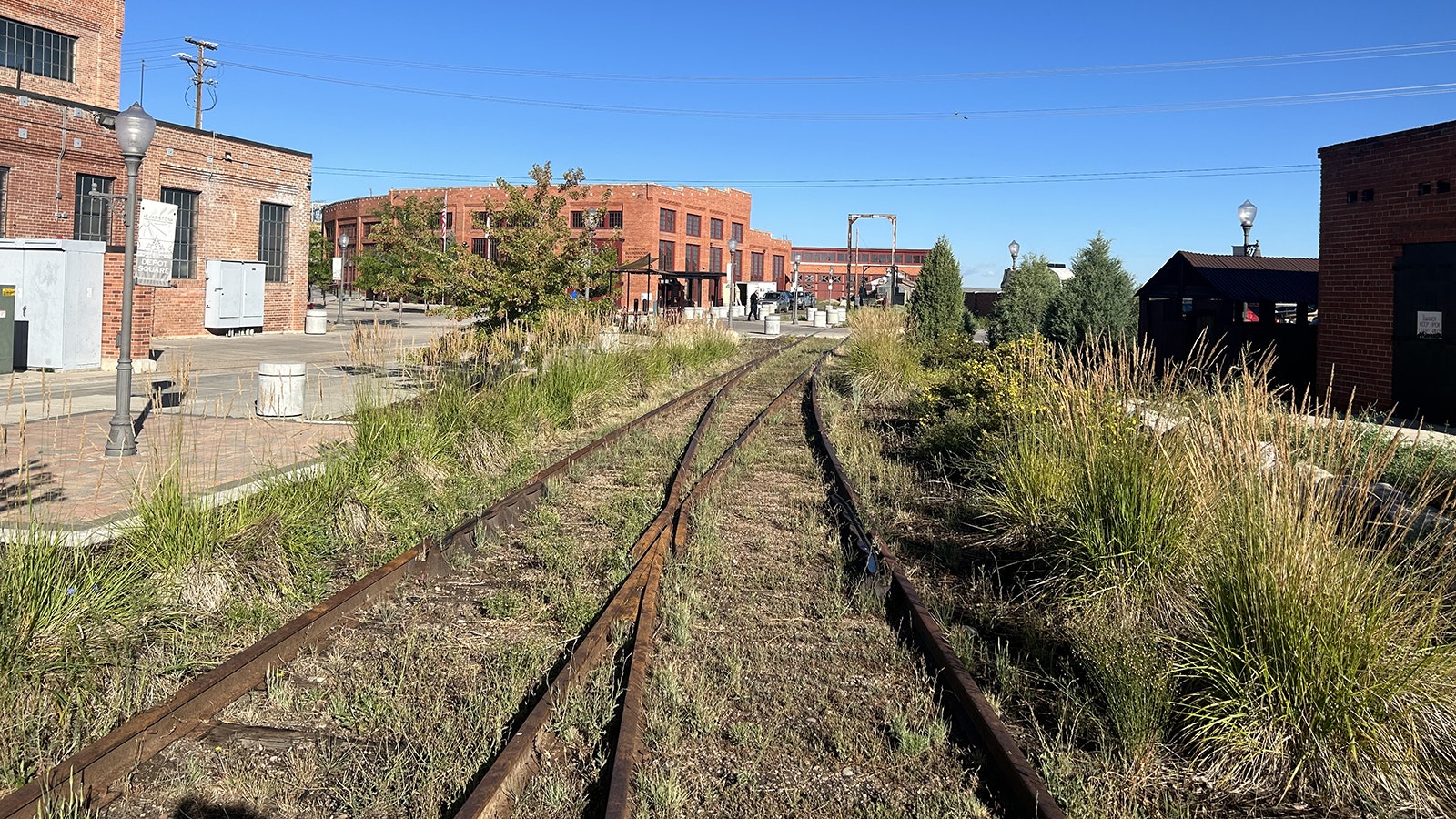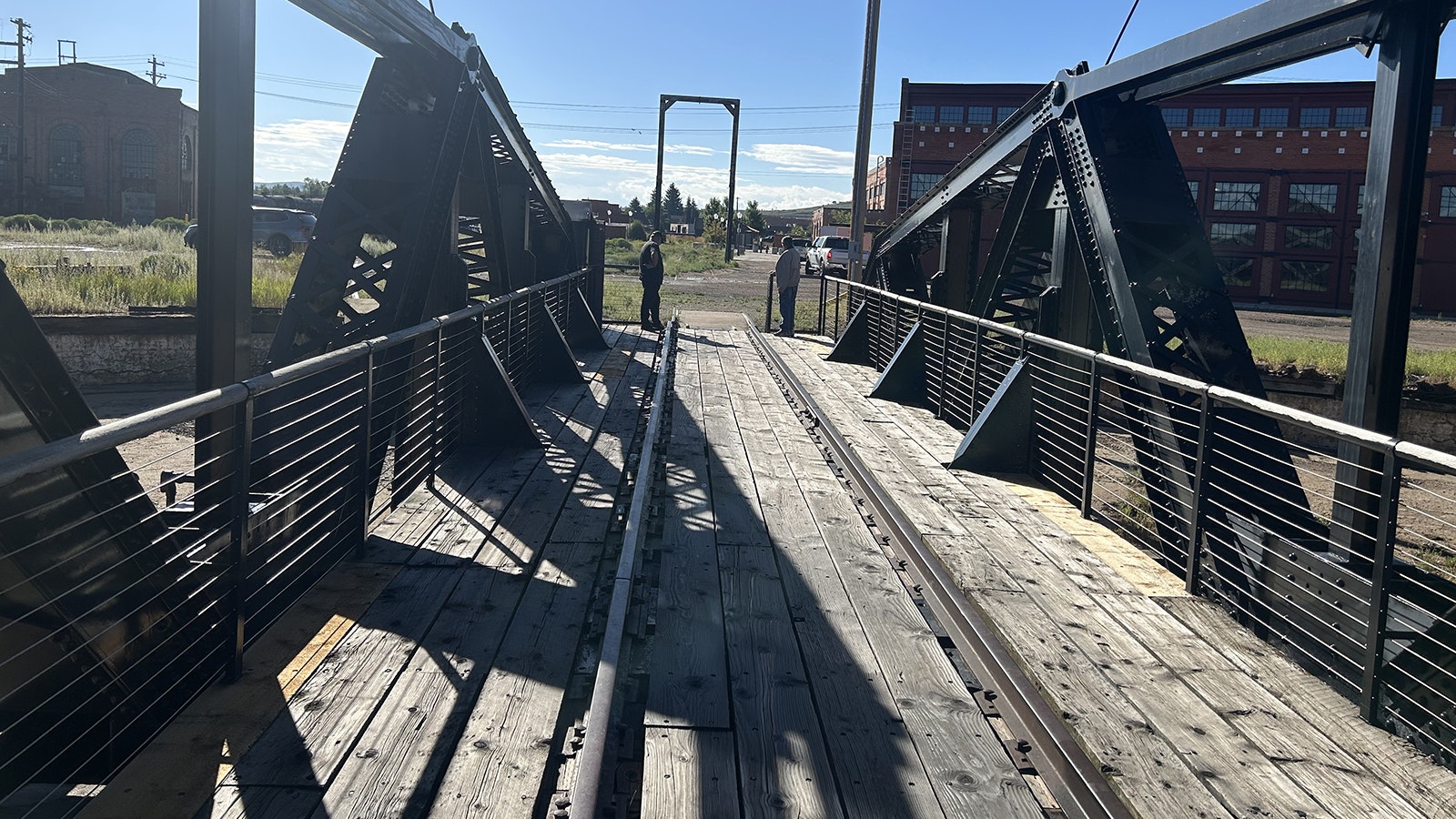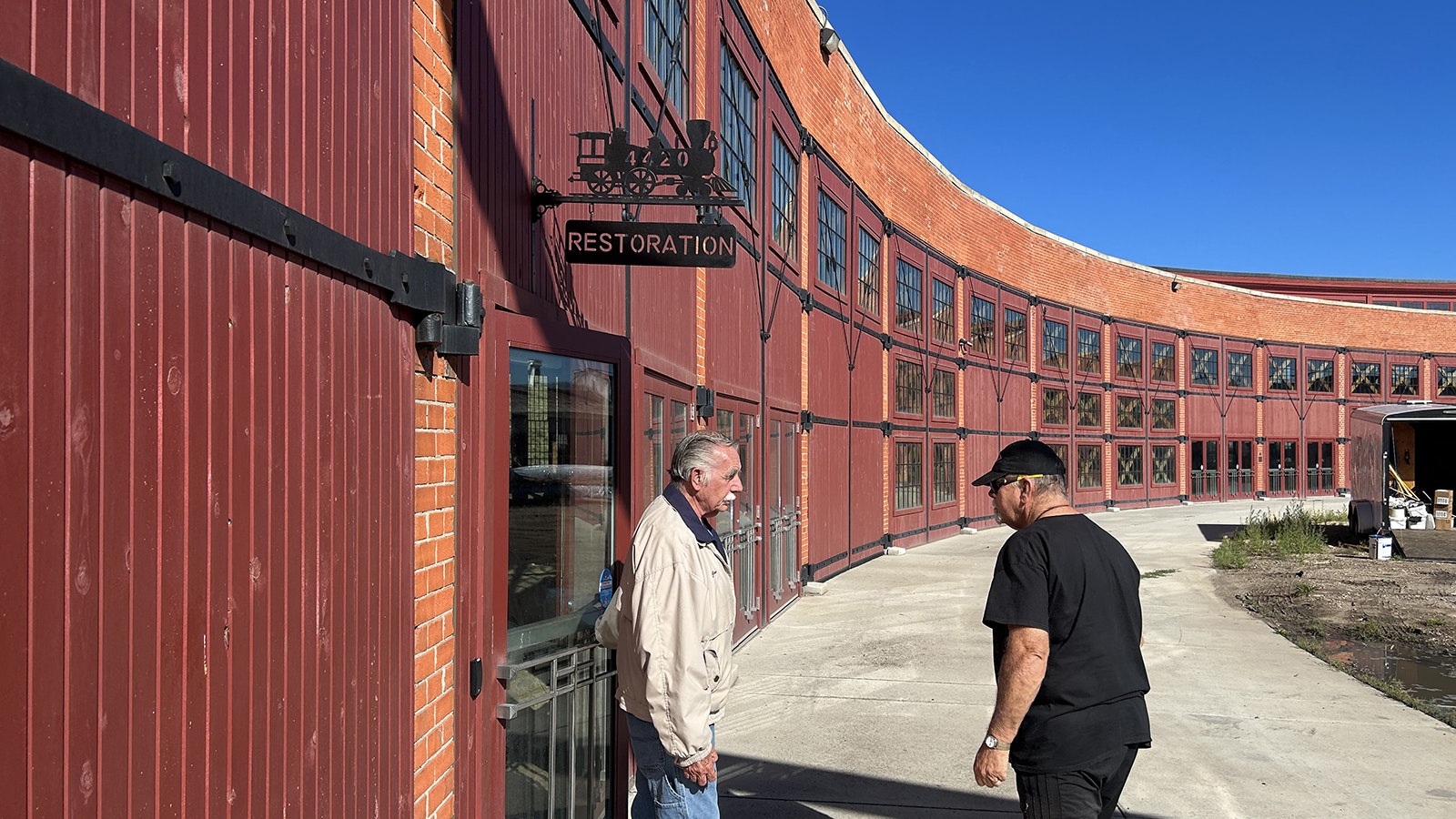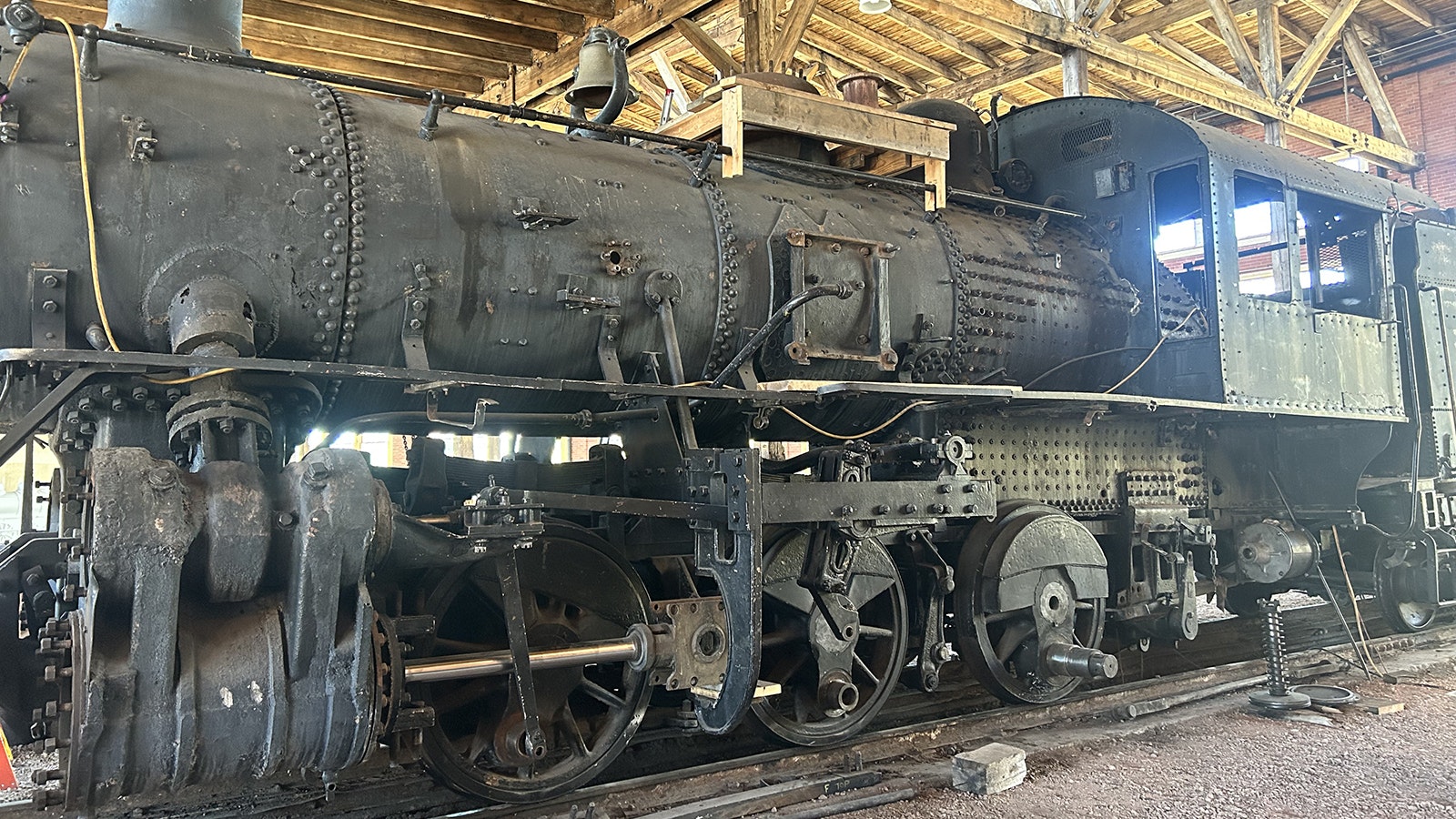EVANSTON — Known as "the old timers," Joe Dean and Wayne Morrow have close to 80 years of collective experience working for the Union Pacific Railroad.
They love history, and as tour guides are proud to share Evanston's historic Union Pacific Roundhouse with the public. Some of their stories are so good, you might even hear them twice.
The Evanston Roundhouse's heyday was in the early 1940s, and at that time the crew that maintained the steam locomotives and train cars of all shapes, sizes and purposes numbered 350 hands.
An Ornate Piece of Railroad History
Nearly every man in town went to work in either the Roundhouse, or the other nearby railroad buildings.
The Roundhouse is a 63,000 square-foot, 96-foot-deep curved brick and mortar behemoth built around a post and beam interior.
The walls are lined with huge banks of wood-framed windows to provide natural light. It has a two-level terraced roof and the face of the terrace is covered with windows to provide additional natural light.

The building is plumbed with four-inch steam pipes for heat, compressed air, oxygen and acetylene that ran the pneumatic tools and provided the means to cut and weld steel.
The building is separated into four sections with brick firewalls. Rails supported by heavy lead doors on pulleys on the firewalls could be closed to prevent the spread of fires.
Out front is a 100-foot-long turntable that resembles a truss bridge. It's powered by a gas engine and hydraulic pump that spins 360 degrees.
It's still operational and a ride around the loop is part of the tour. It was used to line up the locomotives and train cars with tracks leading into each of the building's 28 bays.
Built in 1914, the Roundhouse helped keep Evanston on the map and in turn, the community rallied around the old building to give it a new life.
Roundhouse Repurposed
The struggle to save the building made Evanston the town that refused to relinquish its railroad heritage, according to Railroad Heritage Magazine.
Dean said by 1926 the newest steam locomotives were too big to fit inside the structure and UP made plans to tear it down. For reference, the Evanston Roundhouse is 96-feet deep. The famous UP Big Boy steam locomotives, built from 1941 to 1944 are 130-feet long.
"The city fathers and many Evanston residents went back to Omaha and convinced UP to repurpose the Roundhouse," Dean said. "It was generous of them and it probably saved the town."
"Nearly everyone who lived in Evanston worked here," said Morrow. "The city convinced them that we would be null and void without these jobs and that's when they came up with the Reclamation Shop plan."
The Roundhouse then became known as the Reclamation Shop, and the workers kept their jobs here until 1971. A contractor that rebuilt tankers kept the plant running until 1998. It sat vacant for a few years before an effort to refurbish and repurpose the building started in the early 2000s.
Evanston received a $3 million grant from the Wyoming Business Council and with some generous private donations they were able to complete phase one of the restoration in 2007. The windows were replaced throughout the building, as were the huge double doors, big enough to allow a locomotive to pass through.
Roundhouse Section One includes a large gallery space, an upstairs lounge, a large classroom, and two kitchenettes. It serves as a public facility, hosting weddings, dances, community activities and an annual model train gathering.
Phase two of the project is currently underway. Plans include updating the building to accommodate a brewery. Shades Brewing, a Salt Lake City, Utah company is planning to relocate and open a new brewery that is part of the second phase of the Roundhouse remodel.
The 4420
Just outside a door that separates the gleaming polished concrete floors of Roundhouse Section One, sits a flat black steam locomotive built in Ohio in 1915. The 4420 is two years into an estimated four-year rebuild. Complete with its tender, a car that was used to haul water and coal, it sits on tracks over a pit and its parts are scattered about
Throughout the rest of the building the floor is dirt. The concrete was removed because it contained asbestos, Morrow said. It will be replaced as part of phase two of the project.
The 4420 spent most of its life as a switch engine working at the railyard in Ogden, Utah. Switch engines are used to move rail cars around railyards.
It was later moved to Evanston and sat outside the Uinta County Courthouse until that building was remodeled in the 1980s.
From there it was moved to Railroad Park near Evanston's North Elementary School. In 2020 it was moved back to the Evanston railyard. Dean said they had to lay new tracks and grease them to get the old engine moved into the Roundhouse. The wheels would not turn on their own.

Why Is A Roundhouse Round?
The design of a roundhouse creates a geometry with many benefits.
According to Railroad Heritage Magazine, steam engines had limited capability to travel backwards. The turntable alleviates this problem and the round form of the building allows more access to the front of the locomotive where it's needed and less in the rear, where it's not.
"Their large windows brought task lighting indoors at a time when artificial light was dim and expensive," according to the magazine. "Their high ceilings, clerestories and vents exhausted pollutants and improved indoor air quality. Like much of the industrial architecture of the second half of the 19th century, the roundhouse embodies a maximum of design."
John Thompson can be reached at: John@CowboyStateDaily.com







